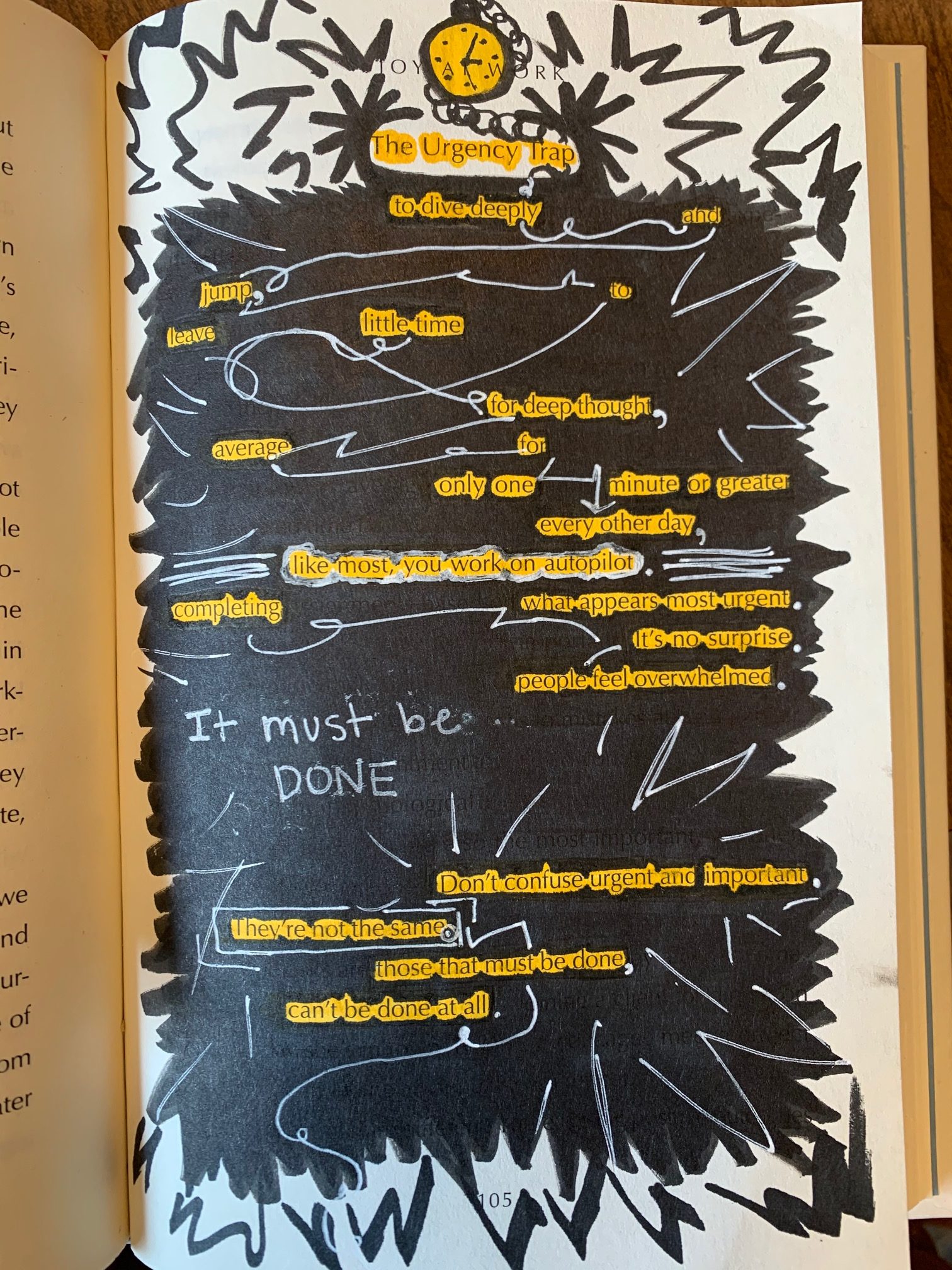April is National Poetry Month! At Sparketh, we love celebrating creativity and innovation, so this post is all about how to take two creative things that we love – visual art and poetry- and put them together through a stunning technique called blackout poetry. Essentially, blackout poetry involves taking a work of existing text and visually narrowing in on certain words that convey a poetic message or theme. Once you have a direction for your blackout poem, you’ll cover up – or blur – the words that are not the focus, leaving behind only the ones that you have chosen to shine.
Part of the creative challenge with blackout poetry is how you will cover up the words that aren’t the main focus of your piece. You may want to cover some of them up in black or colorful opaque or transparent mediums, designs, detailed art, and even photos or art from other resources. You can use markers, paint, pastels, colored pencils. . . honestly any medium you want! As you can see, there are so many ways to be creative and express yourself with blackout poetry, through both the words you choose to highlight and the visual methods you choose to do so.
The underlying thought behind this form of art is that we can find deeper meaning by narrowing in on what’s already there, instead of always having to add more. Poetry and art are often about refining existing concepts and ideas down to what is most important, and blackout poetry really highlights that creative principle.
Who Should Try Blackout Poetry:
One of the nice things about blackout poetry is that it’s a great way to spark creativity at any level. You don’ t have to be an advanced artist, or an advanced poet, to try this art form. In fact, if you’re not feeling very creative, blackout poetry can even act as a helpful creative prompt. This type of art is also a great way to discover new things about yourself as you start to notice what words or themes you are drawn to. It can even be a great form of creative journaling to support good emotional awareness and health.
If you’re a classroom teacher or homeschooling parent, blackout poetry would be a great way to celebrate National Poetry Month as part of an English or art class. It also makes a fun friend or family art activity! Since my family loves art, we got together recently to create some blackout poetry as a group activity. We had a blast and snapped some pictures in the process (which you’ll see below). Whether you’re an artist, a poet, a student, a parent, or a teacher (or some combination of these things), I think you’ll enjoy the creativity and freedom of expression that comes with creating your own blackout poetry.
What You’ll Need:
At bare minimum, you need a text that you are willing to sacrifice for the sake of art/poetry, and some artistic media to cover up words. Here are some specific ideas:
- Old books, newspapers, magazines that you don’t mind getting a forever makeover
- A notebook for brainstorming
- Sharpies, markers pens, colored pencils or your artistic medium of choice
- (Optional ideas) Modge Podge, glitter, fabric, relatively flat 3 dimensional objects (leaves, buttons, ect.)
How to Get Started:
1. Assemble Your Wordy Resources
Start out by assembling some texts that you are okay with using for this project. Go through your house looking for books you don’t need or want anymore, or maybe even peruse a library sale, yard sale, or used book store to find an inexpensive book that makes a perfect canvas. The nice thing about using a book is that it essentially gives you a whole journal for blackout poetry! If you prefer, you can also use newspapers or magazines. Note to parents: if you are doing this project with kids (especially young kids) make sure they know that they need to always check before attempting to do blackout poetry on random books at home.
Does it make you feel guilty to write/draw on books?
As a booklover, I understand feeling a little squeamish about “destroying” books. If that’s you, here are just a few quick thoughts to can help put your mind at ease. Firstly, remember that you’re not actually destroying a book. You’re transforming it. Secondly, recognize that while there are probably many copies of the text you are using out there in the world, you are creating something original and new with it as a canvas. Finally, there are a lot of situations in which blackout poetry can actually repurpose media that was just collecting dust, anyway. For example, outdated textbooks, technical books, cookbooks, newspapers, and magazines tend to just sit around taking up space. When you use them as art, you’re essentially recycling. Recycling is a good thing!
2. Read and Choose Your Main Words
Look over the pages in your chosen text until you find one that catches your eye. Read the page, looking for words that jump out of you. Using a notebook and pen, write down every word that catches your eye, either for its meaning or sound (or any reason!) Tip: It helps to make sure you keep the words in the same order in your notes as on the page of original text. This will help your final poem visually make sense to the reader.
3. Brainstorm Your Message and Tweak Your Selection
Once you have your list of words, scan them them again, looking for a theme or a connection between them. This can be really cool way to gain some insight into your own subconscious thoughts and emotions. Once you have found a meaningful statement or a theme in your words, go back through the original text again and see if there are any other words that might help convey the idea more clearly. Maybe a couple of connecting words are needed, or maybe you’d like to find a couple of alliterative or rhyming words to add to your blackout poem.
When you’re happy with your choices, jot your final selection of words and read it through.
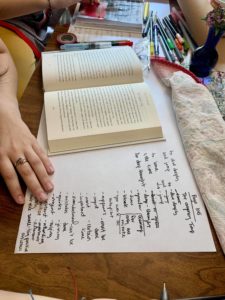
4. Draw Attention to Your Words on the Page
Once you know which words are going to be in your poem, go through the page and put a box or circle around each one of them. In addition to making sure you don’t accidentally leave a word out, this will help you as you as you begin to think about how you will highlight them visually.
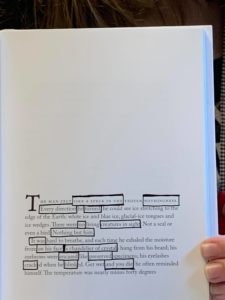
Once all of your selected words are marked, start covering up/masking the words that don’t have to do with your poem. Some people black out everything that isn’t relevant to their poem. Others decide to draw lines or shapes that connect the words together. Some people faintly blur out the rest of the page and then create art over it. Check out our pictures below for just a couple of examples of what these different methods can look like:
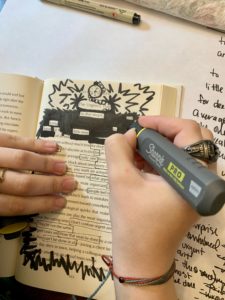
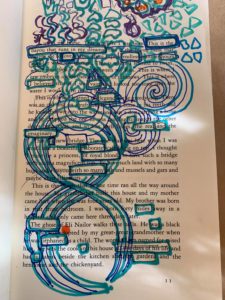
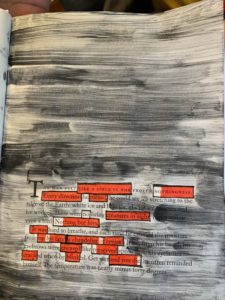
5. Add Art!
Once the words for your poem are highlighted, you can start to enhance the theme of your message by adding the visual creative component: AKA art! Use your favorite artistic medium to create a design, drawing, or painting that goes along with the words of your blackout poem.
If you want, you can even incorporate elements like photographs, fabric, leaves, ect. to make it a mixed-media piece. There’s no wrong or right here. Just be creative! Here are the final results from my family’s art night. It’s fun to see how different and unique each one is!
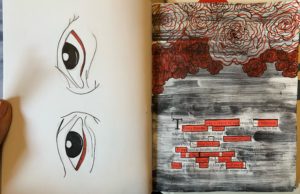 Blackout Poetry by Ella Powell
Blackout Poetry by Ella Powell
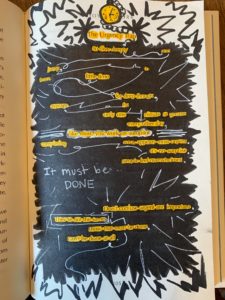
Blackout Poetry by Emma Powell
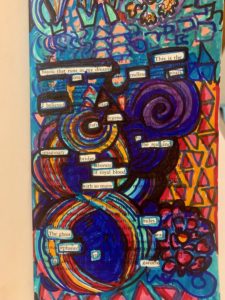
Blackout Poetry by Kathryn Gustafson
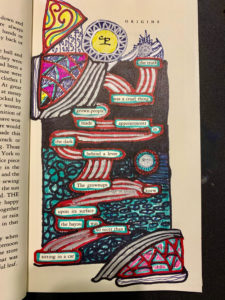
Blackout Poetry by Dane Gustafson
6. Keep Creating
Once you’ve done your first piece of blackout poetry, you may find yourself addicted to the process! It’s a great way to create poetry and art while also gaining some insight into your own mind and feelings. (Plus it also can count as recycling, so….win-win-win-win!?) It could be a great habit to incorporate into your regular routine and nurture your own creativity on a regular basis.
Want more inspiration?
This video on Sparketh’s TikTok channel shows some more awesome blackout poetry examples from Amy— a Sparketh instructor you might recognize from some of the online courses!
Do you feel inspired to give blackout poetry a try? If you are a student (or the parent of one) we’d love for you to share your art with us! You can upload your finished products in the Sparketh member gallery or in our new online Community. You can also tag us on social media with @sparkethdotcom (Instagram) or @sparketh (Facebook) when you share your art. Have fun and stay creative!


